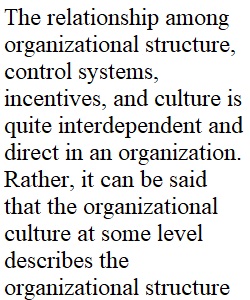


Q DISCUSSION Question: 1. What is the relationship among organizational structure, control systems, incentives, and culture? give some examples of when and under what conditions a mismatch among these components might arise. 2. What kind of structure best describes the way your (a) business school and (b) university operate? Why is the structure appropriate? Would another structure be better? 3. When would a company choose a matrix structure? What are the problems associated with managing this type of structure? How might these problems be mitigated? 4. What kind of structure, controls, incentives, and culture would you be likely to find in (a) a small manufacturing company based in a stable environment, (b) a high-tech company based in a rapidly changing market, and (c) a Big Four ac- counting firm? 5. When would a company decide to change from a functional to a multidivisional structure? 6. How would you design structure, controls, incentives, processes, and culture to encourage entrepreneurship in a large, established corporation? How might the desire to encourage entrepreneurship influence your hiring and management development strategy?
View Related Questions